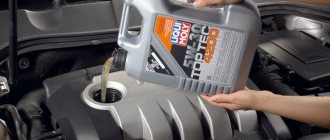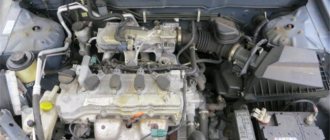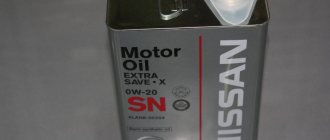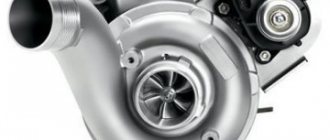The engine oil has become very thick, blackened, foamed, or runny
As you know, the service life of the engine directly depends on the quality of the engine oil and the preservation of the declared properties, as well as on the level of lubrication. For this reason, it is recommended to periodically check the level and condition of the lubricant.
Moreover, during the next check, in some cases you may find that the oil is liquefied and dripping from the dipstick, has become very black, has become viscous and looks more like grease, foam is noticeable in the oil, etc.
Naturally, in such a situation, it is important to know why the oil has changed color and its structure, as well as what consequences may result from further operation of the engine using such a lubricant. Let's look at these issues in more detail.
Thickening: why the composition thickened and what it means
For normal engine operation, the oil must remain fluid and easily penetrate into the channels for lubrication and cooling of parts. The optimal operating mode for the engine is long-distance travel with a light load.
If the car is used for short trips with frequent stops and accelerations, or is operated in the cold season without long-term warming up of the engine, a thick sediment forms in the engine oil due to the ingress of water and fuel that has not had time to evaporate.
Thickening of the substance is also facilitated by tiny particles of dust that the air filter cannot retain, combustion byproducts. Another reason for the increase in the density of the substance is its accelerated oxidation when driving in hot weather or under high loads (towing, steep climbs in mountainous areas, etc.).
Changing the oil and filter more frequently than normal will help avoid thickening. Car owners who drive short distances and with frequent stops are recommended to follow the car's instructions, i.e., change the filter and oil every 6-8 thousand kilometers or every six months. If the substance thickens in winter, it is better to choose a composition of the same type, but with additives that lower the freezing point.
Consequences of untimely replacement: how thick oil affects the engine (video)
Engine oil turned black
Let's start with the color of the lubricant. As a rule, normally any motor oil should darken, and towards the end of its service life it may even turn black. In this case, the darkening of fresh lubricant occurs quite quickly (after 200-300 km). First of all, it is necessary to take into account that the lubricant, in addition to protective properties, also has detergent properties. This means that various deposits, fuel combustion products, soot, etc. accumulate in the lubricant.
Moreover, the rate of blackening is influenced by the degree of contamination of the internal combustion engine itself, its condition, as well as the individual characteristics of vehicle operation. For example, if the engine operates under difficult conditions, there are problems with the combustion of the mixture in the cylinders, then the fuel leaves a lot of soot and other particles that are not completely burned. These contaminants accumulate in the lubricant, deteriorating its properties and changing the color of the oil.
Typically, mineral and semi-synthetic bases darken and age the fastest; synthetics and hydrocracking remain in normal condition longer. It is important to understand that darkening of the oil is normal.
Please note if the lubricant does not darken or change color after several thousand km. mileage, then this indicates low quality oil or an outright fake. In practice, light motor oil has a mileage of about 1.5-2 thousand km. indicates that there are no cleaning properties, there is no ability to retain deposits and soot, that is, contaminants continue to accumulate in the lubrication system and are not captured by the oil itself.
It turns out that if the oil turns black, this is not a reason to immediately replace it. This lubricant can be changed a little earlier than scheduled, taking into account the recommended replacement interval or adjusted for individual operating conditions. In the latter case, heavy loads on the internal combustion engine and a reduction in the planned replacement interval by 30-50% are assumed.
So, as for the reasons for the darkening, taking into account the above, it becomes clear that blackening of the lubricant is caused by:
- low quality fuel;
- disruption of combustion processes of the working mixture;
- quality oil, cheap base;
- low content of detergent additives;
Regarding the rate of darkening, the intensity of the color change is determined by the quality of the oil, the condition of the engine itself, as well as the intervals at which the lubricant is changed. It should also be added that fresh lubricant may turn black due to the fact that it is not possible to completely drain the old oil from the engine when replacing it. As a result, residues are mixed, which change the color of the recently poured lubricant.
Reasons why the engine gets dark
- Wear of the cylinder-piston group, due to which fuel combustion products enter the engine crankcase;
- Oxidation products of low-quality oil with a small amount of additives. Such compositions, when reacting with air, are easily oxidized;
- Old oil remaining in the engine. It is impossible to completely get rid of it - a certain amount of it will still remain in the components of the car. Accordingly, if it was black, then when mixed with a new one it will change its shade to a darker one;
- The amount of additives in the lubricating fluid. The action of special additives is aimed at reducing friction and dissolving contaminants, so a high-quality composition may darken over time as it performs its functions of cleaning the engine;
- Overheating of the power unit can lead to boiling and blackening of the lubricant until its consistency changes, that is, thickening the oil is easier than ever;
- Low quality machine oil that does not cope with its functions.
Article on the topic: Knock in a diesel engine
The engine oil has thickened
Having dealt with the blackening, let's move on to why the driver may detect solid oil in the engine. First of all, motor oils today are all-season, have so-called high and low temperature viscosity (for example, 5W30, 10W40, etc.).
This means that a lubricant of one type or another requires operation in a certain temperature range. Moreover, if the high-temperature viscosity is not so noticeable to the driver, when it gets colder, obvious problems can arise precisely because the oils thicken in the cold.
In other words, at low temperatures the liquid loses its fluidity and in some cases becomes similar to grease. Let us add that usually mineral oil or cheap semi-synthetics, as well as counterfeit products, can thicken so much. In other cases, in cold weather, oil may be pumped worse through the lubrication system in the first seconds after startup, but then the situation returns to normal. One way or another, the lubricant should be selected taking into account the operating conditions and weather conditions. This will help minimize wear on the internal combustion engine during cold starts. As a rule, high-quality synthetics and hydrocracking oils demonstrate the best results.
However, it must be taken into account that an increase in viscosity can occur both depending on temperature and for other reasons. Moreover, this situation is much more dangerous and you need to figure out why the oil in the engine is like solid oil.
Let's start with the simplest. In a nutshell, any oil tends to “break down” over time. Moreover, if you use the lubricant for a long time (significantly increasing the recommended replacement interval), then the used oil completely loses its properties, accumulates a huge amount of contaminants and turns from a fluid liquid into a gel-like substance.
In this case, no liquefaction occurs even after the engine warms up. The result is severe wear of all parts of the power unit, the appearance of noise, then knocking and, in some cases, engine jamming. Such consequences often result from changing the oil based on mileage rather than engine hours.
In practice, the driver can change the lubricant every 15 thousand km, as stated in the manual. However, taking into account the fact that the car often sits in traffic jams for a long time, the unit idles for hours, etc., the mileage may fall within the specified limits, but in terms of engine hours, such oil has been worn out for a very long time. As a result, instead of a fluid liquid, a substance similar to grease formed in the internal combustion engine. Another reason for such dangerous changes in engine oil is engine overheating and polymerization. In simple words, the components stick together, that is, the lubricant “curls” due to high heat.
We also add that in some cases, the ingress of antifreeze or antifreeze into the lubrication system, as well as the accumulation of condensate in the crankcase, also leads to the fact that the lubricant loses its properties, an emulsion forms in the oil and it coagulates.
At the same time, we note that some car enthusiasts practice mixing different oils and also using viscosity additives in order to supposedly improve the basic properties of the oil and avoid its dilution. There have been cases where such experiments made the engine oil too thick with all the ensuing consequences.
Thick oil for an old engine - harm or benefit?
Since Soviet times, motorists have taken the position that thicker oil should be poured into an old engine than into a new one. The fact is that with age, the gaps between parts increase due to wear, and the thicker the oil, the thicker the film that compensates for these gaps and ensures minimal friction. It seems that everything is logical, but modern experts do not recommend doing this, otherwise you can easily wait until the engine is replaced.
Pouring thick oil into an old engine is not just useless. It's also dangerous
Many drivers pay special attention to the engine, because major repairs are expensive, and replacement even more so. Thrifty motorists, after driving 100-150 thousand km, shorten the oil change interval, which, in general, is correct in itself. But using a liquid with a higher viscosity can cause harm to the unit. Is it true that thick oil will prolong the life of a fiery heart or are these all myths from prehistoric times?
To answer this question, we first recall the definition of viscosity index, as well as its purpose. This value tells us about the limits of kinematic viscosity under conditions of normal and elevated operating temperatures. If the car manufacturer allows it, you can fill the engine with a more viscous oil in the summer and use a thinner product in the winter. The main thing is that the viscosity indicators do not “exceed” beyond the recommended limits.
Pouring thick oil into an old engine is not just useless. It's also dangerous. Experimental tests in the Automotive and Tractor Means laboratory of the Sercons Group of Companies have established that with this approach, oil consumption increases due to waste, and there are more than enough other unpleasant consequences. The thicker the oil, the thicker the film. This results in quite a lot of unremoved oil in the cylinder-oil scraper ring pair. You understand where it goes - into the combustion chamber. Hence the high waste expense.
In the near future, the engine will face, at best, a serious overhaul with cleaning.
But this is just the beginning - wear products clog the thin lubricant drainage channels in the piston. The combustion chamber is at risk of coking, and the piston rings are at risk of losing mobility. Gases will begin to break into the crankcase, and power will be lost. In the near future, the engine will face, at best, serious repairs and cleaning. At worst, it will go to a landfill (for scrap metal). And finally, thick oil is difficult to pump - the pump is generally designed for certain viscosity ranges.
If you need to buy motor oil for an old engine, do not focus on viscosity - what is important is the thermal stability indicator, as well as the additive package. High-quality lubrication, frequent replacements, calm driving - these are the main guarantees of engine longevity.
Share link:
- Click to print (Opens in new window)
- Click to share on Twitter (Opens in new window)
- Click here to share content on Facebook. (Opens in a new window)
- Click to share posts on Tumblr (Opens in new window)
- Click to share posts on Pocket (Opens in new window)
- Send this to a friend (Opens in new window)
Engine oil is too thin
Excessive dilution of engine oil can also often occur as a result of aging of the lubricant itself or engine overheating. One way or another, the “viscous” components disintegrate into tiny particles.
The oil may also become too liquid due to excess fuel from the combustion chamber entering the crankcase. In this case, the engine oil level may also increase.
In all cases, liquid oil causes the pressure in the lubrication system to drop, the oil film becomes too thin and the protection of rubbing surfaces is significantly deteriorated, metal parts wear out quickly from friction. Let us also add that the use of engine flushes followed by incomplete drainage can change the viscosity of recently filled in fresh lubricant towards dilution. If flushing oils or aggressive five-minute flushes were used, it is advisable not to load the engine and reduce the interval for subsequent lubricant changes by 30-50%.
Engine oil foams
Another common problem that a car enthusiast may encounter is foaming of the motor oil in the engine. As a rule, the simplest reason may be overflow, that is, exceeding the recommended level.
Also, the appearance of foam and emulsion occurs when the liquid from the cooling system is mixed with engine oil. The lubricant also foams if there has been mixing of lubricating fluids that differ in properties and additive packages. Foaming occurs under the influence of temperature.
Often, during urban operation in winter, the engine does not have time to warm up to operating temperatures during a short trip. As a result, condensation collects in the pan. The same thing happens if the machine is rarely used. In any case, the condensate mixes with the oil, after which foam appears.
Foaming: what's the problem?
The formation of air bubbles can lead to various negative consequences:
- Reducing the viscosity of the lubricant composition;
- Slow removal of thermal energy, due to which the parts and components of the car will not be properly lubricated. The oil in the system moves through special channels of small diameter, and in order to lubricate the engine, high pressure must be maintained in them;
- Lack of proper cooling of power unit parts, leading to overheating;
- Friction between engine parts increases, which leads to their rapid wear. In the most advanced cases, this can lead to water hammer and major engine repairs.
The emulsion in the engine harms all its parts
Motor oil can foam for several reasons:
- Penetration of antifreeze into the lubrication system of transport due to damage to the gasket between the cylinder block and its head;
- Water entering the lubricant, which leads to a change in its chemical composition and the formation of an oil emulsion;
- Incompatibility of lubricants. When changing oil, it is impossible to completely drain the old oil, which can cause it to mix with the new one.
Depressurization of the cooling system
The reason for the appearance of foam in this case is the mixing of oil and antifreeze. In most cases, this occurs due to defects in the gasket located under the cylinder block cover. Antifreeze can mix with engine oil if there are defects in the parts. Cracks form in them due to metal fatigue or prolonged exposure to high temperatures.
It is not always possible to find the coolant leak area
An antifreeze leak is easy to diagnose: just evaluate the smoke from the exhaust pipe. To do this, the engine idles for 10–15 minutes, after which the exhaust pipe is covered with a white sheet of paper. The sheet is thoroughly dried and checked for gasoline or oil stains. We can talk about a seal failure if there are no traces on the dry paper. This can only be eliminated by contacting a service center, since it is almost impossible to find an antifreeze leak on your own.
The color of exhaust smoke may be a diagnostic sign
Various motor oils
Foaming is typical for mixing two oils that differ in composition and properties. This is mainly caused by mixing synthetics and mineral oil. This happens due to the difference in the structure of the two types of lubricating fluids: in their properties, mineral oils are inferior to synthetic oils, which are formed as a result of catalytic synthesis reactions and the structure of which includes molecules of the same size, located at the same distance from each other. Mixing two different types of lubricant leads to the formation of sediment, which, circulating in the engine, forms air bubbles. The only way to eliminate foaming is to use motor oil of the same type and preferably the same brand.
The difference in the structure of synthetic and mineral oils
Condensate
When water gets into the engine or its parts, the latter mixes with the oil, forming an oil emulsion. It does not have a negative effect and does not cause malfunctions, but it indicates low-quality oil. Most often, an emulsion is formed in the winter season: a poorly heated car leads to condensation settling on the engine. Eliminating moisture formation is simple: you need to thoroughly warm up the car before each trip in the cold season.
The formation of condensation on a car engine is not a dangerous phenomenon.
Change in consistency
Engine oil thickening is the most dangerous problem. The consistency of the lubricant may resemble condensed milk, solid oil or even plasticine, the latter leading to negative consequences for the car:
- The car engine starts poorly and stops responding to pressing the accelerator pedal. At the same time, the pressure indicator on the dashboard is constantly lit;
- The engine connecting rods can break away from the pistons and pierce the wall of the cylinder block, which disables the entire engine.
Article on the topic: Installing an on-board computer - the car will become more powerful
Changing the consistency of engine oil is extremely dangerous for the engine.
The exact reasons for the change in oil consistency have not been identified, but there are several basic assumptions:
- Mixing engine oil with water or coolant, resulting in a Shell effect. It is named so because experts from this particular company discovered in the 40s the presence of traces of antifreeze and water in thickened oil. It is worth noting right away that not all oils will change consistency even under similar conditions, however, the presence of water and antifreeze in the composition is a possible reason for the thickening of the lubricant;
- Low quality fuel. According to the theory, the combustion products of such gasoline can mix with the oil, reacting with additives, which causes thickening. It is worth noting right away that this reason is one of the most dubious and is still in question. Low-quality fuel is unlikely to have a strong effect on the oil: it enters the crankcase in minimal quantities and does not stay there for long, since the evaporation temperature of gasoline is lower than that of oil. In addition, mixing fuel and oil leads to a decrease in the viscosity of the latter, and not to its increase. In addition, changes in lubricant consistency also damage diesel engines;
- Human factor. A common reason is associated with pouring low-quality lubricant or a composition that has nothing to do with oil.
Let's sum it up
As you can see, proper operation of the car requires constant monitoring of the level and condition of all technical fluids. At the same time, engine oil is first on the list, since malfunctions of the lubrication system lead to the rapid occurrence of serious and expensive breakdowns of the internal combustion engine.
For this reason, any changes in oil consistency, a decrease or, conversely, an increase in the level of lubrication, the presence of emulsion, foam, clots, excessive contamination or lack of darkening with mileage is a cause for concern.
Finally, we note that in the engine you need to use oils recommended by the engine manufacturer itself, change lubricants and filters in a timely manner, and also adjust replacement intervals taking into account individual operating conditions and the general condition of the power unit.
Didn't find the information you are looking for? on our forum.











